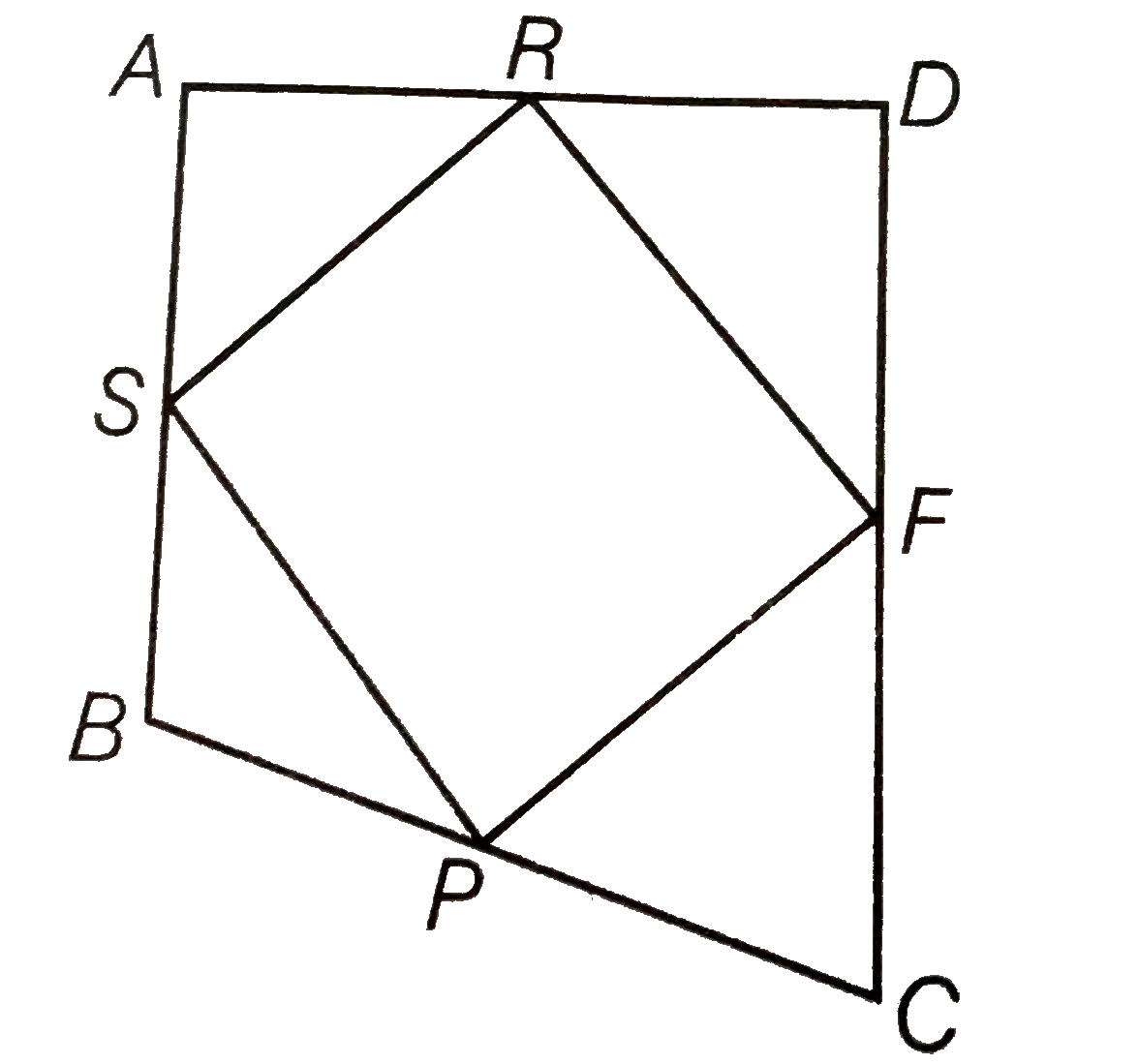If the mid-points of the sides of a quadrilateral are joined in order, prove that the area of the parallelogram, so formed will be half of the area of the given quadrilateral (figure).

Given Let ABCD is a quadrilateral and P, F, R and S are the mid-points of the sides BC, CD, AD and AB respectively and PFRS is a parallelogram.

To prove ar (parallelogram PFRS) = 12ar(quadrilateral ABCD)
Construction Join BD and BR.
Proof Median BR divides ΔBDA into two triangles of equal area.
∴ ar(ΔBRA)=12ar(ΔBDA) ...(i)
Similarly, Median RS divides ΔBRA into two triangles of equal area.
∴ ar(ΔASR)=12ar(ΔBRA) ...(ii)
From Eqs. (i) and (ii),
ar(ΔASR)=14ar(ΔBDA) ...(iii)
Similarly, ar(ΔCFP)=14ar(ΔBCD) ...(iv)
On adding Eqs. (iii) and (iv), we get
ar(ΔASR)+ar(ΔCFP)=14ar(ΔBDA) [ar(ΔBDA)+ar(ΔBCD)]
⇒ ar(ΔASR)+ar(ΔCFP)=14ar(quadrilateralBCDA) ...(v)
Similarly, ar(ΔDRF)+ar(ΔBSP)=14ar(quadrilateralBCDA) ...(vi)
On adding Eqs. (v) and (vi), we get
ar(ΔASR)+ar(ΔCFP)+ar(ΔDRF)+ar(ΔBSP)
=12ar(quadrilateralBCDA) ...(vii)
But ar(ΔASR)+ar(ΔCFP)+ar(ΔDRF)+ar(ΔBSP)+ar(parallelogramPFRS)
=ar(quadrilateralBCDA) ...(viii)
On subtracting Eq. (vii) from Eq. (viii), we get
ar(parallelogramPFRS)=12ar(quadrilateralBCDA) Hence proved.
Topper's Solved these Questions
Similar Questions
Knowledge Check
- Question 1 - Select One
In the adjoining figure, the area of quadrilateral ABCD is
 A148 cm2B144cm2C120 cm2D122 cm2
A148 cm2B144cm2C120 cm2D122 cm2 - Question 2 - Select One
The figure formed by joining the mid-points of the sides of a quadrilateral taken in order is
AparallelogramBrectangeCsquareDnone - Question 3 - Select One
The figure formed by joining the mid-points of the sides of a quadrilateral ABCD taken in order is a square only, if
AABCD is a rhombus.Bdiagonals of ABCD are equal.Cdiagonals of ABCD are equal and perpendicular.Ddiagonals of ABCD are perpendicular.
If the mid points of consecutive of a quadrilateral connected by straight lines prove that the resulting quadrilateral is a parallelogram.
View SolutionThe midpoints of the sides AB,BC,CDandDA of a quadrilateral ABCD are joined to form a quadrilateral. If AC=BDandAC⊥BD then prove that the quadrilateral formed is a square.
View SolutionArea of the quadrilaterals formed by joining the mid points of the adjacent sides of a quadrilateral is________ the area of given quadrilateral.
View SolutionConsider the - following statements in respect of a quadrilateral :
1. The line segments joining the midpoints of the two pairs of opposite sides bisect each other at the point of intersection.
2. The area of the quadrilateral formed by joining the midpoints of the four adjacent sides is half of the total area of the quadrilateral.
Which of the statements given above is/are correct ?View SolutionThe figure formed by joining the mid-points of the sides of a quadrilateral ABCD, taken in order, is a square only, if
View Solution
